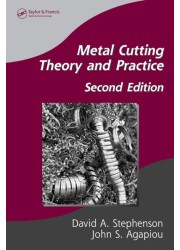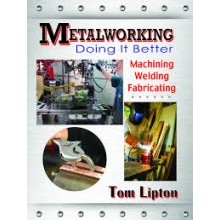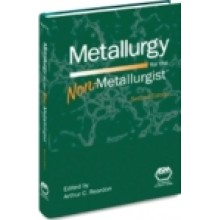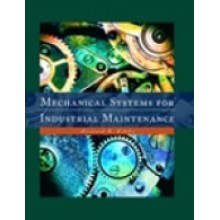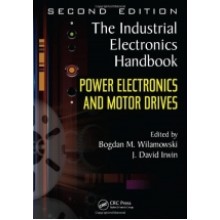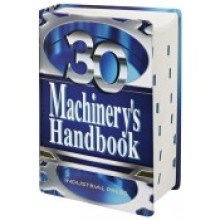Metal Cutting Theory and Practice 2nd Edition
ISBN: 9780824758882
Author: David A. Stephenson, John S. Agapiou
Dispatch Time: 2 - 3 Days
Quantity:
-
Add to Compare
Metal cutting applications span the entire range from mass production to mass customization to high-precision, fully customized designs. The careful balance between precision and efficiency is maintained only through intimate knowledge of the physical processes, material characteristics, and technological capabilities of the equipment and workpieces involved. The best-selling first edition of Metal Cutting Theory and Practice provided such knowledge, integrating timely research with current industry practice. This brilliant reference enters its second edition with fully updated coverage, new sections, and the inclusion of examples and problems.
Supplying complete, up-to-date information on machine tools, tooling, and workholding technologies, this second edition stresses a physical understanding of machining processes including forces, temperatures, and surface finish. This provides a practical basis for troubleshooting and evaluating vendor claims. In addition to updates in all chapters, the book features three new chapters on cutting fluids, agile and high-throughput machining, and design for machining. The authors also added examples and problems for additional hands-on insight. Rounding out the treatment, an entire chapter is devoted to machining economics and optimization.
Endowing you with practical knowledge and a fundamental understanding of underlying physical concepts, Metal Cutting Theory and Practice, Second Edition is a necessity for designing, evaluating, purchasing, and using machine tools.
Table of Contents
INTRODUCTION
Scope of the Subject
Historical Development
Types of Production
References
METAL CUTTING OPERATIONS
Introduction
Turning
Boring
Drilling
Reaming
Milling
Planing and Shaping
Broaching
Tapping and Threading
Grinding and Related Abrasive Processes
Roller Burnishing
Deburring
Examples
Problems
References
MACHINE TOOLS
Introduction
Production Machine Tools
CNC Machine Tools and Cellular Manufacturing Systems
Machine Tool Structures
Slides and Guideways
Axis Drives
Spindles
Coolant Systems
Tool Changing Systems
Examples
References
CUTTING TOOLS
Introduction
Cutting Tool Materials
Tool Coatings
Basic Types of Cutting Tools
Turning Tools
Boring Tools
Milling Tools
Drilling Tools
Reamers
Threading Tools
Grinding Wheels
Microsizing and Honing Tools
Burnishing Tools
Examples
Problems
References
TOOLHOLDERS AND WORKHOLDERS
Introduction
Toolholding Systems
Toolholder/Spindle Connections
Cutting Tool Clamping Systems
Balancing Requirements for Toolholders
Fixtures
Examples
Problems
References
MECHANICS OF CUTTING
Introduction
Measurement of Cutting Forces and Chip Thickness
Force Components
Empirical Force Models
Specific Cutting Power
Chip Formation and Primary Plastic Deformation
Tool-Chip Friction and Secondary Deformation
Shear Plane and Slip Line Theories for Continuous Chip Formation
Shear Plane Models for Oblique Cutting
Shear Zone Models
Minimum Work and Uniqueness Assumptions
Finite Element Models
Discontinuous Chip Formation
Built-up Edge Formation
Examples
Problems
References
CUTTING TEMPERATURES
Introduction
Measurement of Cutting Temperatures
Factors Affecting Cutting Temperatures
Analytical Models for Steady-State Temperatures
Finite Element and Other Numerical Models
Temperatures in Interrupted Cutting
Temperatures in Drilling
Thermal Expansion
Examples
Problems
References
MACHINING PROCESS ANALYSIS
Introduction
Turning
Boring
Milling
Drilling
Force Equations and Baseline Data
Process Simulation Examples
Finite Element Analysis for Clamping, Fixturing, and Workpiece Distortion Applications
Finite Element Application Examples
Examples
Problems
References
TOOL WEAR AND TOOL LIFE
Introduction
Types of Tool Wear
Measurement of Tool Wear
Tool Wear Mechanisms
Tool Wear--Material Considerations
Tool Life Testing
Tool Life Equations
Prediction of Tool Wear Rates
Tool Fracture and Edge Chipping
Drill Wear and Breakage
Thermal Cracking and Tool Fracture in Milling
Tool Wear Monitoring
Examples
Problems
References
SURFACE FINISH AND INTEGRITY
Introduction
Measurement of Surface Finish
Surface Finish in Turning and Boring
Surface Finish in Milling
Surface Finish in Drilling and Reaming
Surface Finish in Grinding
Residual Stresses in Machined Surfaces
White Layer Formation
Surface Burn in Grinding
Examples
Problems
References
MACHINABILITY OF MATERIALS
Introduction
Machinability Criteria, Tests, and Indices
Chip Control
Burr Formation and Control
Machinability of Engineering Materials
References
MACHINING DYNAMICS
Introduction
Vibration Analysis Methods
Vibration of Discrete (Lumped Mass) Systems
Types of Machine Tool Vibration
Forced Vibration
Self-Excited Vibrations (Chatter)
Chatter Prediction
Vibration Control
Active Vibration Control
Examples
References
MACHINING ECONOMICS AND OPTIMIZATION
Introduction
Role of a Computerized Optimization System
Economic Considerations
Optimization of Manufacturing Systems--Basic Factors
Optimization of Machining Conditions
Formulation of the Optimization Problem
Optimization Techniques
Numerical Examples
Problems
References
CUTTING FLUIDS
Introduction
Types of Cutting Fluids
Coolant Application
Filtering
Condition Monitoring and Waste Treatment
Health and Safety Concerns
Dry and Near-Dry Machining Methods
Test Procedure for Cutting Fluid Evaluation
References
HIGH THROUGHPUT AND AGILE MACHINING
Introduction
High Throughput Machining
Agile Machining Systems
Tooling and Fixturing
Materials Handling Systems
References
DESIGN FOR MACHINING
Introduction
Machining Costs
General Design for Machining Rules
Special Considerations for Specific Types of Equipment and Operations
CAPP and DFM Programs
Examples
References
INDEX
Write a review
Your Name:Your Review: Note: HTML is not translated!
Rating: Bad Good
Enter the code in the box below:
Copyright © 2014 Engineering Standards Bureau. All Rights Reserved.
Developed By Zoom Into Web


